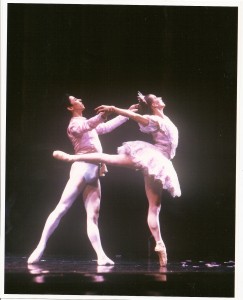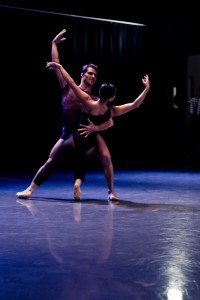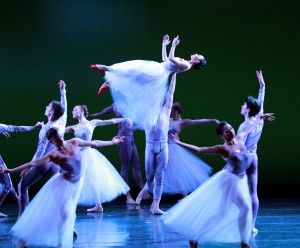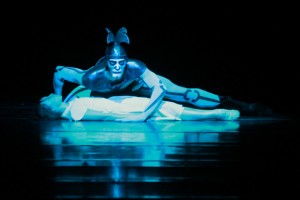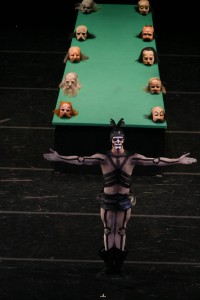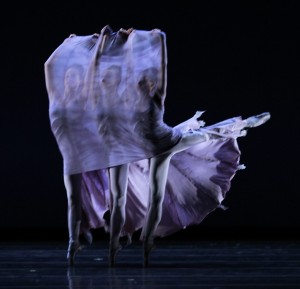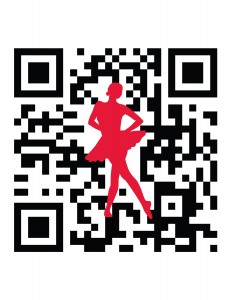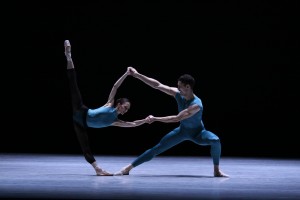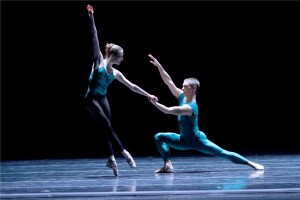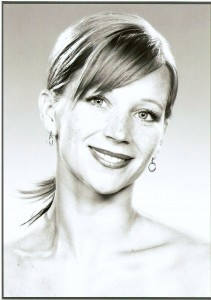 She’s sweet like the Sugar Plum Fairy she will portray in the Ruth Page Civic Ballet‘s The Nutcracker starting this weekend. Local audiences know Jennifer Goodman, 38, from her 16-year tenure at Joffrey Ballet, 13 of it here in the Windy City, where she made a memorable impression in Nutcrackers past as Clara, a variety of variations and, yes, the Sugar Plum Fairy. Since leaving Joffrey in 2009, the Michigan native has enjoyed a lush freelance career dancing for Ballet NY, Ballet X, The Met, Lyric Opera, Chicago Opera Theater, Dallas Opera and will be dancing at the San Diego Opera next year. But first, it’s Nutcracker time. Goodman’s cavalier will be former Joffrey dancer Calvin Kitten (Hi Calvin!) this weekend, former River North Dance Chicago dancers Luke Manley next weekend, then she heads to Minnesota to dance with another former Joffrey-ite Matthew Prescott (Hi Romeo!).
She’s sweet like the Sugar Plum Fairy she will portray in the Ruth Page Civic Ballet‘s The Nutcracker starting this weekend. Local audiences know Jennifer Goodman, 38, from her 16-year tenure at Joffrey Ballet, 13 of it here in the Windy City, where she made a memorable impression in Nutcrackers past as Clara, a variety of variations and, yes, the Sugar Plum Fairy. Since leaving Joffrey in 2009, the Michigan native has enjoyed a lush freelance career dancing for Ballet NY, Ballet X, The Met, Lyric Opera, Chicago Opera Theater, Dallas Opera and will be dancing at the San Diego Opera next year. But first, it’s Nutcracker time. Goodman’s cavalier will be former Joffrey dancer Calvin Kitten (Hi Calvin!) this weekend, former River North Dance Chicago dancers Luke Manley next weekend, then she heads to Minnesota to dance with another former Joffrey-ite Matthew Prescott (Hi Romeo!).
RB sat down with the petite ballerina to talk pointe shoes (Freed), freelancing, yoga (she trained at Core Power Yoga) and, of course Nutcracker.
Since you’ve done The Nut a billion times, how do you keep it fresh?
Being Sugar Plum as a freelancer, it’s easier to keep it fresh. I pretty much do my version, a pretty classic version. Each show is new. Sugar Plum is easy because it’s technically challenging and the music is so beautiful. I enjoy it so much that every time I go out there; I feel it. Clara was more difficult. The last time I did it I was 34. I love doing story ballets. It takes you out of being just you. It’s fun to go somewhere else and become a character. Definitely as I’ve gotten older I’ve enjoyed taking on those roles. That helps keep it fresh.
What’s a typical performance day for you? Do you have any routines or superstitions?
I try to stay away from superstitions. I try to catch myself. As far as routine, especially if I’m guesting and there isn’t class offered, I have an order of how I get ready. I do my make up, then my hair and then I go warm up. I have a routine I do. I’ve noticed, because there is so much time to wait during the second act before you go on…with that anticipation, you go crazy, so I end up going over the whole thing with just my arms. Calvin and I have a routine for Ruth Page. We do our opening, we go off to the side, we sit, we chat, we stretch. Sometime around Russian, we stand up and move around a bit. At Flowers we stretch a bit more and then at a certain point in the music, we part. I go to my side of the stage, he goes to his. I’ll go over the pas de deux with my arms right up until we need to go and then we blow each other kisses.
You’ve been dancing with him for almost 20 years.
One year he came in the morning of the first show. We didn’t even touch each other. It was one of our best shows. He knows me. He knows my movement. It’s pretty cool.
How is it switching partners from week to week?
It’s definitely different. We’re all professionals, so it’s not that hard. Especially with Calvin and Matthew. I have to do a little more with Calvin just because of the height.
When did you start to get certified in yoga and how have you incorporated that into your dance life? How has it changed your dancing?
Last summer, I did a week intensive teacher training. Prior to that, in New York, I started taking more classes. What drew me into it even more than just the physicality was dealing with problems personally and wanting to heal what I’d been going through. Yoga is so good for that because there is so much positivity and self-love it really touched me and helped me get through. When I came here and did the week of training, I just loved it. It built my confidence up so much more. After the training, I went to teach a ballet class and I noticed I was calmer when I taught and I was a lot more positive and confident. I’m not going to worry about whether people are liking it or not or that I’m not doing the right thing. People have noticed, even doing Sugar Plum since last year, my confidence in the dancing and expressiveness I was giving out, not just worrying about the technical, was a lot freer.
Ruth Page Civic Ballet’s The Nutcracker at Northeastern Illinois University Auditorium, 3701 W. Bryn Mawr, Saturday, Dec. 1 at 7 pm and Sunday, Dec. 2 at 1 pm. Tickets are $18-$25. Call 773.442.4636 or visit www.boxoffice.neiu.edu/civic_ballet.
Performances on Saturday, Dec. 8 & 9 at 3 pm presented at Elgin Community College Arts Center, 1700 Spartan Dr, Elgin. Tickets are $20-$32. Call 847.622.0300.

